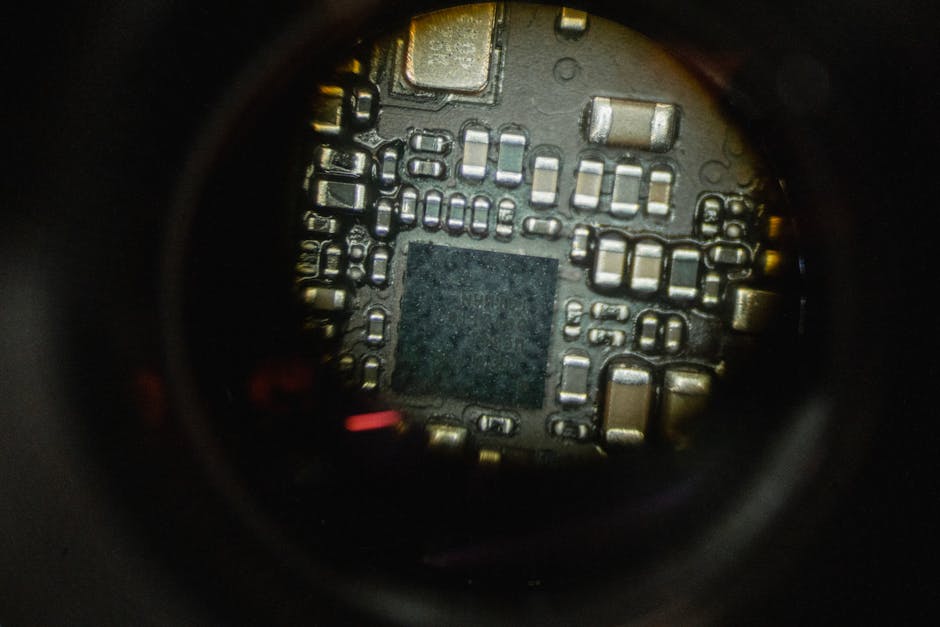So, you’re wondering how those little apps on your phone actually get made, huh? It’s 2025 now, and pretty much everything we do has some app doing something for it. From ordering a sandwich to trying to figure out which bus to take, apps are just everywhere, all the time, kind of. People generally, you know, they really rely on these things, and it makes sense to be curious about how something so everyday, it actually gets put together. It is, generally speaking, a somewhat complicated journey, one that takes quite a few steps and a bunch of different people all working on different parts of the overall setup. We are going to look a little bit at that whole process here.
It is really important to understand that making an app, this isn’t just one person sitting down with a computer and poof there it is. No, it’s a bit more involved, with many different phases. Each one kind of stacking up on the last, building something from, well, nothing really, just an idea someone had in their head, often while maybe stuck in traffic or something.
The whole thing, what we talk about when we say “app making,” it involves thinking about what the app should do, then how it should look, after that, building the actual code, then checking it for problems, and then finally getting it out there for people to use. That’s, you know, the basic rundown of it all, but each of those parts, they have many tiny things that happen inside them too. It’s a whole thing.
A lot of the time, people start with just an idea, and it’s a big step to go from just a random thought to something that can run on your phone. This beginning part, it’s very important, and frankly, some people rush it, which can cause troubles later, like trying to fix a leaky faucet in a house that’s already built, which is never easy, generally.
What often occurs is that there are many different skills needed for this work. Like, some folks are really good at drawing, making things look nice, and then others, they’re the ones who really understand how to tell the computer what to do, which is usually with code. It is a mix of art and logic, usually, and that’s what makes it kind of neat, if you ask me.
You might think it’s just for the big tech companies, but smaller teams and local places, even groups that specialize in mobile app development Houston, they do this too. They’re making apps for all sorts of local needs, which is a good example of how widespread this kind of work is nowadays.
Getting the Ball Rolling: From Idea to a Plan
Everything, and I mean usually everything, it starts with an idea. Someone has a thought, like “wouldn’t it be cool if my coffee machine could text me when it’s done?” Or “I wish there was an easier way to find a dog walker nearby.” This initial spark, it’s a big deal. Without it, you got nothing really to go on.
After that initial thought, normally, people start asking questions. Who would use this app? What problems would it solve for them? How would it actually work, step by step? It is at this early stage that a lot of brainpower goes into figuring out the “what” and the “why” of the whole app. Not just what it does, but why it needs to exist at all.
This means doing some “discovery,” as they call it. Which is basically just checking out the market. Are there other apps like this? What do they do well, and where do they, well, fall short? Understanding what’s out there already can often save you a lot of time and, let’s be honest, quite a bit of money too, down the road.
Then comes the real planning. This is where everyone starts to put things down on paper, or usually, on a digital whiteboard. They draw out user “stories,” which are basically just descriptions of what someone would do with the app. “As a coffee drinker, I want to be notified when my coffee is ready,” that kind of thing.
All these thoughts, they usually get collected into something called a “requirements document.” This thing, it’s like a big list of everything the app should be able to do, from the tiniest button press to the biggest calculations it needs to handle. It is considered to be a very important piece of paper, or file.
This part of the process, it can take some time. Sometimes people rush it, but generally speaking, it’s better to get these basic plans as solid as possible. Because changing things later, once the actual building has really started, it can get tricky, very tricky. Like moving a wall after the house is built, you know.
Making It Look Good: Design and User Experience
Okay, so you have your big plan, what the app needs to do. The next step, normally, is to make sure it looks good and, more importantly, that it’s easy for people to use. This isn’t just about pretty colors, though those are part of it too, it’s mostly about how someone interacts with the app.
This is where the user interface (UI) and user experience (UX) designers get involved. These people, they are the ones who try to think like the person who will actually use the app. They try to figure out what makes sense, where buttons should go, and how someone would move from one screen to another without getting confused.
They often start with “wireframes.” These are like simple sketches of each screen, without any fancy graphics or colors, just boxes and lines showing where everything will be. It’s a bit like a blueprint for a house, showing the rooms and where the doors are, but not the paint color or the furniture.
After the wireframes, they usually move to “mockups.” These are more detailed, with actual colors, fonts, and images. They give a much better idea of what the final app will look like. It’s still not the working app, but it’s a pretty picture of it. This usually helps everyone see the vision.
Then comes “prototyping.” This is where they make a clickable version of the app. It’s not the real app running, but it feels like it. You can tap buttons, and it takes you to the next screen, so you can get a real feel for how the app flows. It’s a way to test the user journey before any code is even written.
This design stage, it is really important. If an app is hard to use, or if it doesn’t look good, people probably won’t stick with it for very long, no matter how clever the idea is. A bad experience, it usually means people just delete it and try something else, which is not what you want generally.
The Real Build: Writing the Code and Making it Work
Once the designs are approved and everyone knows what they want, then comes what many people consider to be the main part of app making: the actual building. This is where the programmers, or developers, come in. These are the people who write all the code that makes the app do its thing.
They usually start by picking what platform the app will run on. Is it for iPhones, using iOS? Or for Android phones? Or maybe both? There are different programming languages and tools for each. Sometimes, they use tools that let them build one app that works on both, which can sometimes be faster, but it also has its own challenges too.
There are two main parts to building an app: the “front-end” and the “back-end.” The front-end is what you see and interact with on your phone screen. The buttons, the text, the images – all that visual stuff. The back-end, that’s the stuff happening behind the scenes, like where your data is stored, or how the app talks to other services.
So, one group of programmers, they might be building the front-end, making sure all the designed screens and interactions come to life. Another group, they usually focus on the back-end, setting up servers, databases, and making sure the app can talk to them properly. It’s all working together, even though they’re separate parts.
This building phase, it’s usually the longest part of the whole process. It’s where all the detailed work happens, translating designs into lines and lines of code. And it’s not always a smooth ride, as, you know, things often pop up that weren’t expected, or a piece of code doesn’t work quite right the first time.
Many times, the development team will use different tools and frameworks to speed things up. These are like pre-made parts they can use, so they don’t have to build every single little thing from scratch. It’s like building with LEGOs instead of cutting all the plastic yourself.
Checking for Problems: Testing, Fixing, and Making It Better
After a good chunk of the app is built, it’s really important to make sure it actually works as it should. This is where testing comes in, and it’s a big, big deal. You wouldn’t want to release an app that just crashes all the time or doesn’t do what it promises, right? That would be a bad scene, generally speaking.
There are special people for this, called Quality Assurance (QA) testers. Their job is basically to try and break the app in every way they can think of. They tap all the buttons, try weird inputs, and check every single feature to see if it’s working properly, or if there’s some problem hiding somewhere.
They create “test cases,” which are like lists of steps they need to follow to check different parts of the app. If they find something wrong, that’s called a “bug.” And when they find a bug, they write it down in a bug report, which usually includes how to make the bug happen, so the programmers can fix it.
This process of finding bugs and fixing them, it goes back and forth quite a bit. Testers find bugs, developers fix them, then testers check again to make sure the fix worked and didn’t cause any new problems. It’s a kind of dance, you know, back and forth, until things get really solid.
Besides manual testing, where people are actually using the app, sometimes they use “automated tests.” These are little programs that run by themselves and check parts of the code automatically. It helps catch some problems really fast, especially after programmers make small changes.
It is also common for a small group of real users, often called “beta testers,” to get access to the app before it’s released to everyone. Their feedback is usually very useful, because they find things that the development team might have missed, since they are using it in a more natural way, often.
The Grand Opening: Launching and Keeping It Updated
Alright, so the app is built, it’s been tested, and everyone thinks it’s ready to go. The next big moment is getting it out there for people to download. This is called “deployment” or “launching.” It’s exciting, but it also has its own set of things to deal with.
For iOS apps, you submit it to Apple’s App Store. For Android apps, it goes to Google Play Store. Both stores have rules and a review process. They check to make sure the app follows their guidelines, isn’t buggy, and doesn’t have any bad stuff in it. This review, it can take a few days, or sometimes a bit longer.
Once it’s approved, boom, your app is live! People can find it, download it, and start using it. This is a big moment, and usually, there’s a good bit of celebrating after all that hard work. But the work, it doesn’t just stop there, it really doesn’t.
After the launch, you normally have to keep an eye on things. How are people using the app? Are there any new problems popping up? What do users like, and what do they dislike? There are tools that help track this kind of information, which is very useful for planning future updates.
Because that’s the next part: maintenance and updates. Apps are not static; they usually need regular care. Operating systems on phones get updated, new features are thought up, and sometimes, new bugs are found. So, developers generally keep working on the app, adding new things and fixing old ones.
These updates, they’re typically released regularly, maybe every few weeks or months. It shows users that the app is still being cared for and improved, which is good for keeping people using it. Plus, technology, it changes all the time, so apps need to change too, to stay current.
So, from a simple idea to something running on millions of phones and being regularly updated, the whole trip of making an app is pretty involved. It takes many steps and a lot of different people, each with their own job, all working together to make something useful and, hopefully, enjoyable for everyone. It’s a cycle, really, of ideas, building, testing, and improving, over and over again.
Frequently Asked Questions about Mobile App Development
How long does it usually take to make a mobile app?
Well, it truly depends on how much stuff the app needs to do. A very simple app might take a few months, maybe three to six. A more complex one, with lots of features and integrations, can take six months to over a year. There’s really no one-size-fits-all answer here.
What kind of costs are involved in making an app?
The costs, they can vary a lot, just like the time it takes. It depends on the number of features, the design quality, and what platforms it needs to run on. Building an app can start from tens of thousands of dollars for simple ones and go into hundreds of thousands, or even more, for very complex projects.
Do I need an app for both Apple (iOS) and Android phones?
Generally, yes, if you want to reach the most people. Most users have either an iPhone or an Android phone. If you only build for one, you’re usually missing out on a big part of your potential audience, which is not what you generally want.
What’s the difference between native and cross-platform app development?
Native means you build separate apps for iOS and Android, using their specific tools and languages. Cross-platform means you write the code once, and it runs on both iOS and Android. Native often gives better performance, but cross-platform can sometimes be faster and cheaper to build for both.
What happens after the app is launched on the app stores?
After launch, the work doesn’t stop. You usually need to monitor how the app is doing, get user feedback, and plan for updates. This involves adding new features, fixing bugs that might appear, and making sure it stays compatible with new phone operating system versions.










